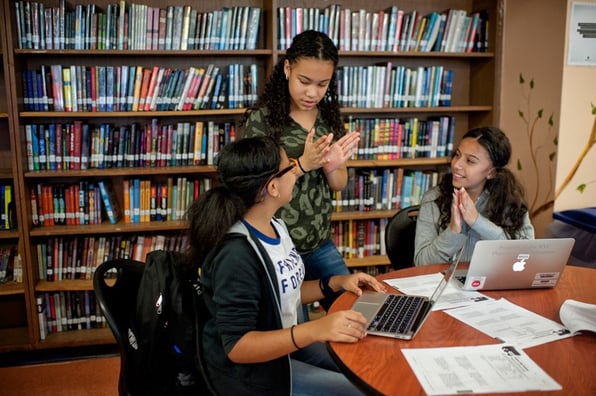
How to Teach Entrepreneurship to Students
By honing their problem-solving skills, students prepare for college and career

When students communicate, collaborate, and create real value, motivation and passion soar. Students can quickly spot the difference between a class that is playing the game of school and a class that is engaged in meaningful real-world learning. If teachers facilitate opportunities for students to develop these skills through teaching entrepreneurship, grades and due dates become secondary. The classroom can become an incredible place.
It may seem, however, that there is no time for teaching entrepreneurship or entrepreneurial skills. Content, assessments, and standards mandated by higher powers leave little room for these student-led projects.
But if the job of school is to prepare students for college and career, then it is essential for educators to teach entrepreneurship. According to Millennial Branding, a Gen-Y Research & Management Consulting Firm, one in three employers seek entrepreneurial experience in its hires.
Now, that does not mean every student has to start a business. The Network for Teaching Entrepreneurship (NFTE) notes that “An extensive body of literature suggest[s] that entrepreneurial skills such as creative problem solving and collaboration are important for academic success.” In other words, even for students who never want to launch a startup, entrepreneurial education is beneficial. When students hone their critical thinking and problem-solving skills, they prepare for college, career, and 21st-century success.
But can we teach entrepreneurial skills or are they inherent in students’ personalities?
In a report titled “On-Ramp to Opportunity,” NFTE points to research suggesting that entrepreneurial skills, often overlapped with the term non-cognitive skills, are malleable just like other aspects of our education. Basically, kids get better with practice. The report cites a study of a middle school entrepreneurship education program in the Netherlands that led to an increase in “self-efficacy, achievement orientation, risk-taking propensity and probleming solving skills” among student participants. These are all skills that I’d like my students to have, whether they become business leaders or traditional employees.
Students don’t have to create businesses or nonprofits to learn entrepreneurship. There are everyday strategies that help develop the skills needed for an entrepreneurial world.
Activities to Teach Entrepreneurship:
1. Turn class participation into speaking events.
Instead of standard class discussions, give students a chance to practice public speaking. Teachers can make this shift by integrating Ignite Talks or pop-up debates. These work in any subject area. With these activities, kids feel positive pressure as they speak to an audience. Entrepreneurs do this when pitching to investors or speaking to customers.
2. Introduce project-based learning (PBL).
When entrepreneurs launch a startup, they often begin by attempting to solve a narrowly-defined problem. For example, companies like Uber and Lyft solve a transportation problem by facilitating immediate access to reliable car rides, so that people can travel in a cheaper and more convenient way. Teachers can launch a PBL initiative that empowers students to define real-world problems and create solutions for those problems.
Buck Institute for Education (BIE), an organization that supports PBL in schools, describes this process as a way for students to “gain knowledge and skills by working for an extended period of time to investigate and respond to an authentic, engaging and complex question, problem, or challenge.”
3. Integrate high-quality, nonfiction texts into the curriculum.
By bringing in relevant, contemporary material to the classroom, teachers can engage students with the issues they care about. Students can research a cause that matters to them.
For example, let’s imagine that your students read five articles throughout the semester about environmental issues. Next, ask students to vote on the issue that feels most important to them. Go further by helping students reach out to experts in the field. Lastly, help students organize a fundraising or volunteering activity that helps students to make an impact in this area outside of the classroom.
4. Work with authentic tools and platforms.
With the proliferation of 1:1 devices, there is a flood of communication and classroom tools geared towards students. But these tools, which often have a narrow use case confined to the classroom, shelter students from the authentic digital world.
Free sites like Wordpress, SoundCloud, YouTube, GoFundMe, and Instagram, however, are used by entrepreneurs to establish platforms and grow audiences. By using these same tools in a lesson or project, students can practice the same methods that modern entrepreneurs use to share their work with the world. Of course, mind your district policies and consider student age when using these tools.
Not every class will teach students how to code. Not many students will launch a startup from their classroom. But with the right mindset and a few well-chosen strategies, teachers can help students develop the skills they need to succeed in our increasingly entrepreneurial world.

Gerard Dawson is a full-time high school English and Journalism teacher. He is the author of Hacking Literacy and publishes articles on literacy, technology, and life as an educator at his site www.GerardDawson.org. Gerard lives in New Jersey with his wife and two sons.

